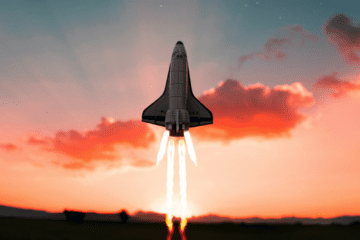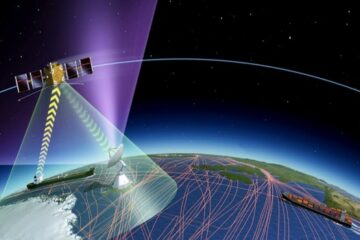Future developments and economic implications
ECONOMIC ANALYSIS TOOLS FOR MINERAL PROJECTS IN SPACE
FRAMEWORK USED FOR ALL THE REASONING FOLLOWED
High risk, long lead times, and high capital cost
SALES
- At the present moment –> no real need for astro-mined products
- Products: habitats, metals, concrete, water, air, He-3 etc
- Market only government sponsored
PROFITS
- Low profits –> need for government involvement
- Combining public + private
- Boost further operations
- Balance the costs
COSTS
- Research and development (inventing, designing, constructing, testing)
- Exploration and delineation (identifying right asteroids, feasibility studies for the operations, on site testing)
- Transportation
- Construction and development
- Time value of money
PROFIT REDUX
- Terrestrial projects: pay back the investment in 3-5 years
- Terrestrial: with high risk –> shorter payback period limit is preferred

CONCLUSIONS
- Higher risk
- Longer payback period
- High cost space transportation
- Research and Development increases risk
- Mitigate these drawbacks –> COMBINE DIFFERENT PROJECTS (water + minerals)
Pillars
- Problem of profitability: even though the raw materials on a single asteroid can be worth trillions of dollars, with our current technology extracting their resources would be so costly that we would not make any revenue out of it.
- A scaling economy: high fixed costs for entry in the industry but after the first successful trip achieving the next one becomes less expensive
Ex: we could use the moon’s gravitational pull to make asteroids’ orbit much closer to Earth and further reduce extraction costs
Challenges:
PROPULSION SYSTEMS AND ASTEROID PROSPECTING:
- The distance separating us from asteroids. The 2 main agglomerations of asteroids are in the Asteroid Belt (further than Mars) or in the Kuiper Belt (outer part of the Solar system), but in the near-future we would need to focus on near-to-Earth asteroids.
- With our current propulsion systems sending cargo even in Earth’s low-orbit is expensive enough 🡪 need to develop alternate propulsion systems like electrical engines already used in deep-space probes or other.
NB: possibility of using water on the asteroids to create more fuel on the spot
- Asteroid prospecting: finding the best EROs (easily recoverable objects) that are accessible, large and the right composition 🡪 robotic prospectors will visit the asteroids
NETWORK OF SPACE RELAYS:
- Complex technology to stop the asteroid’s rotation (vaporizing surface with lasers, stop rotation with thrusters)
- Wait the right moment to fire thrusters and use orbital mechanics to bring asteroids closer to the Moon (point is that it has a stable orbit around Earth)
- Technology required for the extraction of the asteroid’s raw materials.
Ex: giant mirrors focusing sunlight to heat up asteroid rock, boil out the gases, break up the dried rocks into gravel/dust and centrifuges separate light from dense elements).
Ex2: The Mond process.
- Complexity of getting the extracted materials back to Earth (reusable rockets? 3D printed objects? Heat-shielded capsules filled with gas bubbles that land in the sea?)
The whole point is to have more materials, cheaper and less polluting.
Different types or asteroids? (S-type , M-type) :
Type of materials: iron, nickel, aluminium, titanium,
Planetary Resource firm estimates that a 30-meter asteroid may contain 30 Billion $ in platinum.
All of our electronic devices need some minerals that are rare on Earth (Terbium, Noedynium, Tantalum)
Moreover mining on earth is highly dangerous for environment (air/water pollution + chemicals)
Going to space become cheaper so more profitable to exploit asteroid but still too expensive to be profitable
Small astroids (1km length) -> 4.5 trillions $ value (with platinium or an other small can provide enough nickel for erath consumption for millions of years) some values 700 quintillion$
Process to mine: target the asteroid, move it to a place easier to mine and then just do it (but we still need to truly understand how to move them efficiently and “safely”)
Study it through meteoroids. Asteroids have been made before the creation of earth -> part of the formation of solar system (4.5 billion years old)
Made of really pure metals (nickel-iron) but have a huge variety of compositions (most of them are stony from melted metals.
Solar system generated in a nebula -> cloud of gaz/dust colasped due to gravity and has created planets, asteroids etcs. Asteroids belts : not able to form a planet due to the gravity of Jupiter as it attracts “big objects”.
- NEAR Shoemaker : landed on Eros in 2001
- Dawn spacecraft reached the asteroids belt in 2011 to study Vesta (2nd largest object) and then Ceres (the largest)
- OSIRIS-Rex to study Bennu and bringing a sample back to earth (2018) but have yet landed
- ESA Rosetta for Comet 67P/Churyumov-Gerasimenko in 2014
if all asteroids of the solar system are assembled : would have a lower mass than the Moon
nb of asteroids : hundreds thousand (still thousands more discovered each year but 99% asteroids above 100km diameter already discovered but very few discovered with a small diameters … could have million below 1km).
Biggest : Ceres : 933km in diameter and 26 others bigger than 200km
Different colors: (light reflected by the asteroid enables to know the type of rock at the surface)
- Darkest: carbon rich (left over from the raw material of the nebula at the origin of the solar system + could store chemicals at the origin of life (for some exobiologists)
- Brighter stony one: nickel-iron with magnesium silicates
- Brighted : pure nickel-iron (rarest one)
Exist interstellar asteroids : ejected from a star system and go in the galaxy without any orbit until it is catch by the gravity of a starsystem
Get trapped in the asteroid orbit
Scanning process : With spacecraft orbiting around it to take picture and analyse but time consuming / costly to arrive and orbit around an asteroid without been sure it will worth it -> need remote sensing (photometry, colorimetry, spectroscopy, polarimetry and radar detection + comparing analysis with already known asteroids)
-> most of those studies can only be on the dimension of the asteroids and on the characteristics of the surface, not on the inside composition.
Landing on an asteroid : last JAXA mission : bounce and rebound on the asteroid to finally stabilize … -> not the best as can harm the rover or a really short landing/bound for the spacecraft (only some seconds to extract some sample) and use explosion …
Osiris Rex mission 1month ago : Touch and Go approach
Mining process :
For water : microwave or heating technologies to separate water from the other components (technologies that could be tested on the moon with Artemis project) already existing
Or optical mining by concentrating on the surface of asteroids sunlight that vaporise water beneath the surface and then trapped it (avoid landing on the asteroids + digging phase -> perfect for small asteroids) -> in dvpment
Now let’s consider briefly the economic implications and then two examples about astro-mining enterprises:
SALES
So, in the market in order to gain profits from sales, you need products to sell. What are the products of astro-mining? For example water, minerals like platinum and various precious metals, Helium-3, concrete, habitats and similar.
But the problem is that -at the present moment- there isn’t a real need for astro-mined products: water can be used as fuel and habitats will be needed once we colonize other planets, but the path to get there is still long. And for now profits suffer.
PROFITS
Yes, because since there isn’t a real demand for astro-mined product the profits are low compared to the risks.
In the future this sector will grow exponentially, and at that point we won’t have to worry about profits, but for now and for the next few decades this represents an obstacle. Therefore the investments made now are to be considered as investments for future investments.
To do so the involvement of governments is required: combining the efficiency of a private company with the less-profit-oriented tendencies of a public organization we can balance the costs of such an enterprise and so boost further operation
COSTS
But what are these costs?
- First we obviously have Research and development, so inventing, designing, constructing and testing the equipment but also developing strategies and ideas to face this challenge;
- Exploration and delineation: which means identifying the right asteroids and to determine the feasibility of the operations with both Earth based and on site tests.
- Transportation costs: which means arriving to the asteroid and back to Earth
- Construction and development costs: once on site the physical plant must be build before the mining process can start
- Time value of money: this last one is correlated with the returns, so let’s consider it
RETURNS
here the point is that usually terrestrial projects have a payback time for the investment between 3-5 years
And usually when the risk is high- it’s preferred to have a shorter payback period
INSTEAD astro-mining projects have a very high risk and a very long payback period
It is actually so risky that the level is categorized as “wildcatting” and on Earth the ROI required to face such a risk would have to be higher than the 200%!
Instead -as we will see in the following example- the returns for astromining projects are for now expected to be much lower.
Let’s consider the following case study:
PLATINUM FROM ASTEROID, example
The following data and estimates are taken from the study “Economic analysis tools for mineral projects in space” by Richard and Leslie GRE-TCH:
They considered the steps for a mission mining platinum from an asteroid and bringing the product back to Earth
- The minimum cost estimated is of 5 billion dollars, aND this value is set low on purpose
- The amount of time required should be around 12 years, divided as follows
- Simultaneously between year 1 and 5 both Research and Development
- And a first scout mission on the asteroid for exploration
- In the years 2 to 5 the construction of miner and processing plant
- The years 6 and 7 are spent flying to the asteroid
- The eighth year is dedicated to the actual mining and initial processing
- In the years 9 to 11 the flight back
- In 12th year we would be able to sell the product
- Going back to the The other variables to consider:
the Risk, which as said before is much higher than the terrestrial one - Paypack period which is longer
- And the ROI.
The returns depend on the tonnes of the asteroid that we are able to mine, but also on the amount of platinum we can bring back:
Do you remember that we defined this category of risk as wildcatting? And that usually for such a high risk the ROI is supposed to be higher than 200%?
Well, here it’s impossible to achieve the same results: to obtain an ROI of 50% it would be required to mine 45 billion kilos of the asteroid’s mass. And to reach the 100% the amount required would increase up to 500 BILLIONS.
CONCLUSIONS
In conclusion, considering such expenses and in order to mitigate these drawbacks, a possible solution would be to combine different projects, as one mining for minerals and one for water.
Water mining
First of all, we have to answer the question “why should we mine water when we have tons of water available on Earth?” Well, it turns out that there are a bunch of reasons. First of all, bringing water to space is expensive. As you all might know, the cost of bringing an additional kilo in space grows with an exponential law due to the so-called rocket equation. Moreover, water is present in many near earth objects, as outlined by Thibault. Also, water is much easier to extract that metals such as platinum as we’ve analyzed with Francesco, since the technology required is already available or at least it is in the developing phase. Water mining could serve as a support service to many missions such as those on the ISS and, in the future, on the Gateway. On top of that, water can be used as a less expensive and more powerful source of fuel with water thrusters. This technology is thriving also thanks to companies such as Orbit-Fab that have developed systems to make in-orbit refueling possible, opening the market to reusable satellites and, hence, less space debris.
But, how profitable is Water mining? I am going to briefly cover a research paper by Pablo Calla, Dan Fries and Chris Welch from the International Space University that analyzed the topic. First of all, the authors outline the mission architecture, which is structured as Jean Philippe described: a spacecraft leaves earth, reaches the asteroid, costs the asteroid to understand where water is and where to safely land, It extracts and process water before leaving the asteroid to deliver water whenever it is needed.
The authors also outline some mission requirements, the most important being a small structure of the spacecraft, which should weight around 500 kg in total, and the extraction of at least 100 kg of water to sell in addition to around 50 kg of water to be used as fuel. The hardware required on board the spacecraft is firstly a microwave water extractor. This technology has already been tested by NASA and represents an easy and efficient way to extract water. Then, we need a drilling system. Commercially available drilling systems can be used since they have been tested on materials such as limestone that are likely to be representative of C-type asteroids. We also need water thrusters, that have been developed by NASA, a guidance, navigation and control system, that have already been developed by NASA and many other space agencies for other missions; lastly we need a communication system, and we can use the communication system developed for other missions.
Now I’m gonna give you some numbers. First of all, costs can be divided into four categories: spacecraft bus, the payload, first lunch expenses, that are beard only once and consist of research and development and lastly, the Lunch cost. With regards to revenues, a market for water in space has not been developed yet and therefore we can consider the cost of delivering water from earth to different places as a proxy of the potential selling price. According to the authors, who also took into account the learning curve, break even can be reached after 10 years of cis-lunar delivery of water using 200 space crafts. This means that an upfront investment of around 2 Billion dollars is needed. The investment is of course high but we believe that the investment return period is not extremely long and hence it constitutes a feasible investment.
Having said so, there are many challenges to overcome in the future. First and foremost, defining the potential clients. After our analysis, we can summarize potential clients, that we identified as likely after our research, into three groups: Telecom companies that might need water for their satellites; Governments that are engaging in space missions that involve humans such as the US with the Artemis project; private space companies that aim to develop space travels and their own privately funded research missions.
On top of that, huge opportunities are in the miniaturization of spacecraft components, in making extraction techniques more efficient and in developing an harvesting system in space. Lastly, I want to leave you with another interesting and promising field that is biomining. Biomining is interesting since it is currently, as we speak, being researched on the ISS thanks to an experiment that was brought to the ISS with the last Crew 1 mission.
APPENDIX
PLATINUM FROM ASTEROID, example
- Estimated min cost $5 billion
- 12 years

- Risk is higher than terrestrial
- Pay pack period is longer
- ROI depending on tones to be mined

Bibliography
Hubble Examines ‘Psyche’: https://www.forbes.com/sites/jamiecartereurope/2020/10/26/hubble-views-massive-asteroid-called-psyche-that-could-worth-more-than-our-global-economy/#3431ead5515a
Is asteroid mining possible? https://www.space.com/15405-asteroid-mining-feasibility-study.html
Study for Planetary Resources
By Keck Institute for Space Studies (KISS) at the California Institute of Technology, Pasadina (2012)
Technologies for astromining
Asteroids: Biblioteca e Archivi Università Bocconi. (unibocconi.it)
Most of those tech are duped by startup thank to public private partnership that’s reduce development costs
Leave Earth : https://youtu.be/VlbZTyBuFlQ more and more affordable with new generation of Arianne, SpaceX, Blue Origin or Virgin Galatics etc due to higher competition ( + 100 launching company into the race to get the best rocket for Space)
Propulsion: ion propulsion (http://0-eds.a.ebscohost.com.lib.unibocconi.it/eds/detail/detail?sid=ef33e4d2-30e9-49e3-a41c-35bdc3083cdc@sessionmgr103&vid=8&db=ers&ss=AN+%2289250499%22&sl=ll )
How Asteroids are made of? (https://www.youtube.com/watch?v=RfxxBGfCicY)
Origin of the asteroids belts : https://www.youtube.com/watch?v=5UUrDEDxtY8
Different mission to asteroids: (https://spaceplace.nasa.gov/asteroid/en/)
ESA website on asteroids : https://www.esa.int/Science_Exploration/Human_and_Robotic_Exploration/Exploration/Asteroids
Landing on an asteroid https://youtu.be/khaGSwyLk_w, https://youtu.be/s6hm_chbhQk, https://www.youtube.com/watch?v=VGosZWBTF7A
Technologies for astromining
Asteroids: Biblioteca e Archivi Università Bocconi. (unibocconi.it)
Most of those tech are duped by startup thank to public private partnership that’s reduce development costs
Leave Earth : https://youtu.be/VlbZTyBuFlQ more and more affordable with new generation of Arianne, SpaceX, Blue Origin or Virgin Galatics etc due to higher competition ( + 100 launching company into the race to get the best rocket for Space)
Propulsion: ion propulsion (http://0-eds.a.ebscohost.com.lib.unibocconi.it/eds/detail/detail?sid=ef33e4d2-30e9-49e3-a41c-35bdc3083cdc@sessionmgr103&vid=8&db=ers&ss=AN+%2289250499%22&sl=ll )
How Asteroids are made of? (https://www.youtube.com/watch?v=RfxxBGfCicY)
Origin of the asteroids belts : https://www.youtube.com/watch?v=5UUrDEDxtY8
Different mission to asteroids: (https://spaceplace.nasa.gov/asteroid/en/)
ESA website on asteroids : https://www.esa.int/Science_Exploration/Human_and_Robotic_Exploration/Exploration/Asteroids
Landing on an asteroid https://youtu.be/khaGSwyLk_w, https://youtu.be/s6hm_chbhQk, https://www.youtube.com/watch?v=VGosZWBTF7A



0 Comments